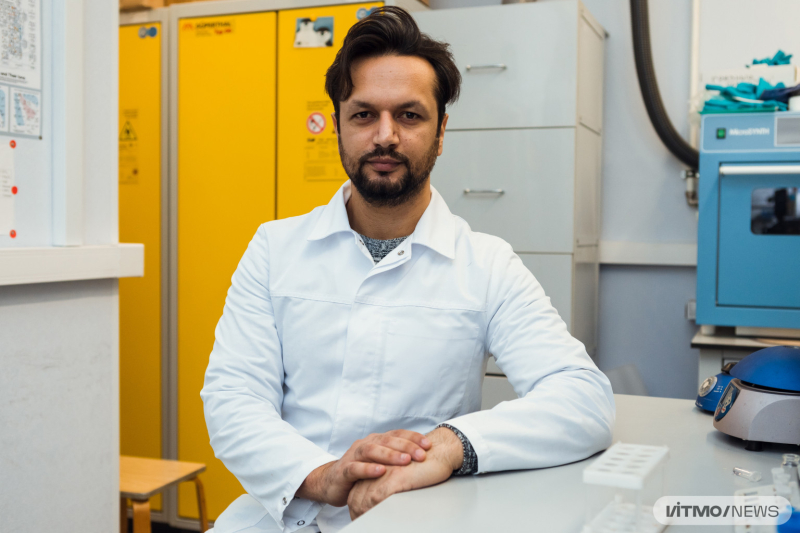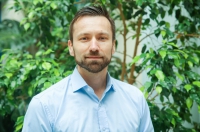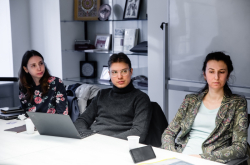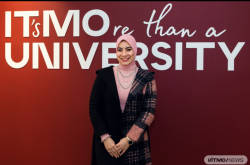Dr. Abbasi, what do you do at ITMO?
I'm a postdoc researcher at ITMO’s International Research and Educational Center for Physics of Nanostructures and also a researcher at ITMO's International Laboratory "Hybrid Nanostructures for Biomedicine." My work lies within materials science and engineering. The project I am working on is about the synthesis of nanomaterials for environmental and energy applications. Technically speaking, I am developing a material that will utilize solar energy and convert it into chemical energy through the process of photocatalysis. Consequently, this chemical energy would be used to purify wastewater by photodegradation of organic pollutants, such as pharmaceutical drugs, personal care products, etc.
I am from Pakistan; last year, I completed my PhD, with part of my research conducted in my home country and another part at Technical University Darmstadt and GSI Helmholtz Centre for Heavy Ion Research, Germany, as part of a German Academic Exchange Services (DAAD) program. Once I defended my thesis, I started looking for postdoc positions. I considered several options, for instance, there was an opportunity in Italy, but I decided to come to Russia.
Why?
I like the rich history and culture of Russian. I also have great interest in history, therefore I already knew some of the important historical events, specifically regarding the city of St. Petersburg and, of course, I was impressed by the enchanting and adorable architecture of this city. I learned that Peter the Great conquered this land from the Swedes and decided to move the capital from Moscow to St. Petersburg. By the way, in terms of architecture, St. Petersburg feels less like a Russian city and more close to the European style, I would say a blend of Italian, French, and English architectural styles.
There are also some similarities between Russian and my own language. I speak Urdu, which is widely spoken in Pakistan or in the subcontinental region. From my experience, I can say that it’s easier to learn Russian from Urdu than it is from English. For instance, in English, you use the pronoun “you” to address anyone and there is no distinction in terms of respect for your interlocutor. In Urdu, like in Russian, we have different pronouns that are used based on the level of reverence to that person. We also have grammatical gender, so there are masculine and feminine words.
In general, many people from Pakistan move to the US, the UK, or other English-speaking countries for work; other destinations, including Russia, are a rare choice. For me, it provided additional motivation – I wanted to go to a new world, explore it, and tell the people in my country about Russia and its people.
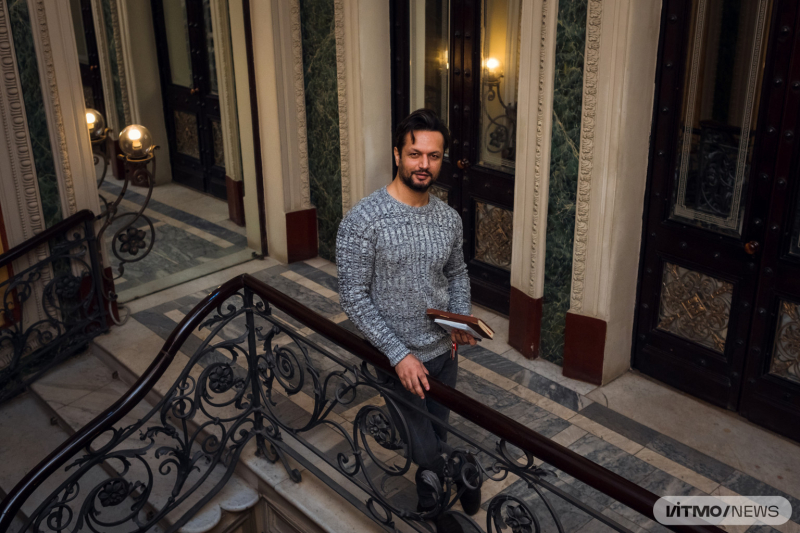
Muhammad Ali Abbasi. Photo by Dmitry Grigoryev / ITMO.NEWS
You’ve been in St. Petersburg for six months already. How do you like it? Did it take you a long time to adapt to the weather?
How do you imagine Pakistan? People often think it’s a hot, sunny country, when actually it’s not exactly right. For instance, I come from the city called Murree, which is situated in the north side of the country, an hour’s drive away from the capital, Islamabad. Murree is in the mountains, so we have a lot of hills and pine forests, just like the black forest of Germany or meadows of Switzerland, and we also have a lot of snow there. In winter, temperatures can drop to -10°C, almost like in St. Petersburg. Maybe that’s why it took me so little time to adapt to the weather here. I have also noticed that people in St. Petersburg are very polite and welcoming, they are very kind to foreigners. When I talk to the locals here, I don’t feel like an outsider.
As for ITMO, I had a really good impression of the university before I came here. I first learned about ITMO through a general search on Google. The website of the university had a user-friendly interface, and through a little search, I found the right group that was a fit with my research experience and interest. I emailed and got a response quite early. Through the correspondence, I learned about the well-organized and professional team of the ITMO Fellowship program.
And when I came to St. Petersburg, I saw that my impression was correct. ITMO is home to professionals and, having communicated with the International Office here, I can say that I haven’t seen such a level of work ethics in neither Italy nor Germany. I know that if I have an inquiry on any topic, I can voice it and get a clear answer. Some of the issues were solved even before I arrived here. The university’s staff rented me a flat and arranged that upon my arrival, and a group member met me at the airport and escorted me to my residence.
You mentioned that your project within ITMO Fellowship concerns water pollution. Could you talk a little more about it?
We typically divide water into pure and contaminated, but from the scientific point of view, there are different kinds of contamination depending on the pollutant. There can be plenty of those – organic, inorganic, bacterial, and many other. Even in this classic categorization, new and new types keep adding up.
Every day, we use different personal care products and medicines, like sunscreen, lotions, and beauty products, or take painkillers. Once these substances clear out from our body or from our shelf, they don’t just disappear – they end up in wastewater. Even though such water goes through several filtration cycles, traces of pharmaceuticals and cosmetics may still remain persistent. This is undesirable, because such pollutants can cause allergies, cytotoxicity and carcinogenicity to human or aquatic life or even mutation in agricultural crops.
Compared to other pollutants, such as oil or heavy metals like mercury, the concentration of drugs and personal hygiene products isn’t high. However, this doesn’t make them less dangerous. It is also not easy to detect these pollutants and filter them from the water.
Today, there are two reliable ways to do this. The first one is based on pH, turbidity, and calorimetry. However, this method doesn’t work when the concentration of pollutants is low. Two more advanced methods are spectroscopy and electrochemical analysis, but they also have their limitations. The thing is, the pollutant can change: it can have one molecular structure in the water and a different one when exposed to sunlight. That’s why, even with these advanced methods, you can’t always detect such pollutants and get rid of them.
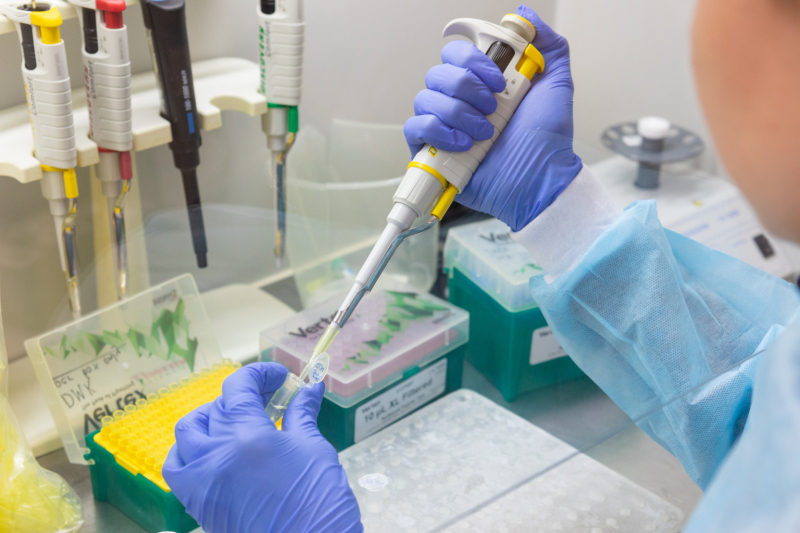
Photo by ITMO.NEWS
What solution do you suggest?
Heterogeneous catalysis can help tackle this problem. The essence of this method is that in the presence of sunlight, a photocatalytic material produces reactive forms of oxygen. They, in turn, interact with pollutants and degrade them into smaller nontoxic molecules and simpler compounds. As a result, we get clear water fit for use.
As a basis for this photocatalytic material, I chose 2D metal carbides (2D MXenes) and their composites. Since their discovery in 2011, these materials have earned a reputation as some of the best available photocatalysts. Compared to other materials, 2D MXenes have enhanced band gap and prominent surface characteristics. The first feature affects a material’s capacity to take in as much visible sunlight as possible and convert it into chemical energy necessary to process the pollutants. And the second one allows it to absorb more polluting substances and convert them into minerals on the spot. Additionally, 2D MXenes are sustainable materials that can be reused.
What stage is your project currently at? And what are you planning to do next?
I started working on the project last September and I am currently at the first stage: I am synthesizing and studying the structural and optical properties that can influence photocatalytic activity. Next, I will optimize the material until I get the right properties and form, fit for the degradation of pollutants.
If all goes well, I will proceed to the next stage. I am planning to focus on one specific class of organic pollutants – the highly carcinogenic compounds, such as anti-cancer drugs. Such drugs are given to patients undergoing chemotherapy, but, but once treatment is completed, these substances enter sewage waters. My plan is to collect used anti-cancer medicine from hospitals or imitate this kind of waste by, for instance, adding mixtures of medicines to water, and then allowphotocatalytic materials to degrade them through the process of photocatalysis. In parallel, I will also work to deal with heavy metals like mercury and arsenic, as these substances are used in the industry and unfortunately also end up in the sewers.
As a result, I will have a photocatalytic membrane that you can simply dip into water to start the purification process. It’s simple and easy, because you can take such membranes with you anywhere you go.
In the third year of my project, I am thinking of potentially adding another feature to my research known as the production of H2 through water splitting. The photocatalytic material will not only purify water, but also produce clean energy – hydrogen fuel. How? Water molecules can be split into one atom of oxygen and two atoms of hydrogen. However, currently, the main issue is that water splitting requires more energy than it produces. So, to turn photocatalytic membranes into full-scale producers of hydrogen fuel, we need to come up with a way for them to produce more energy than is spent. Once it is achieved, it would be a revolution.
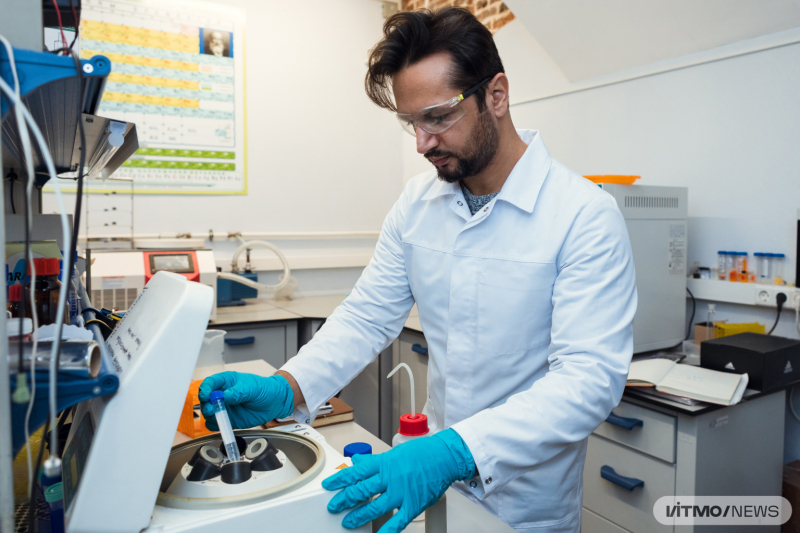
Muhammad Ali Abbasi. Photo by Dmitry Grigoryev / ITMO.NEWS
What do you do in your free time?
Several times a week, I go to the gym after work. I also chat with people in an English-speaking club, where I have already made some friends.
In summer and autumn, I spent a lot of time walking around the historic locations and parks of St. Petersburg and the Leningrad Oblast, making videos for my vlog. I’ve already been to Summer Palace, Winter Palace, and Mikhailovsky Palace, Peterhof, and the Peter and Paul Fortress, but I was especially impressed by the Hermitage and its huge collection from all over the world.
St. Petersburg is a beautiful, charming, lively city that has a lot to offer. There are truly a lot of parks and museums that are maintained and curated. Even though I had watched videos about the city and had known it was one of the most beautiful cities in the world, I was still very impressed when I saw it with my own eyes. But watching videos on YouTube and feeling and observing in real life is different. Right now, I am actively enhancing my professional and scientific skills during my tenure at ITMO, while also immersing myself in a new cultural experience as an expatriate residing in St. Petersburg. In short, I’m enjoying my stay here.
